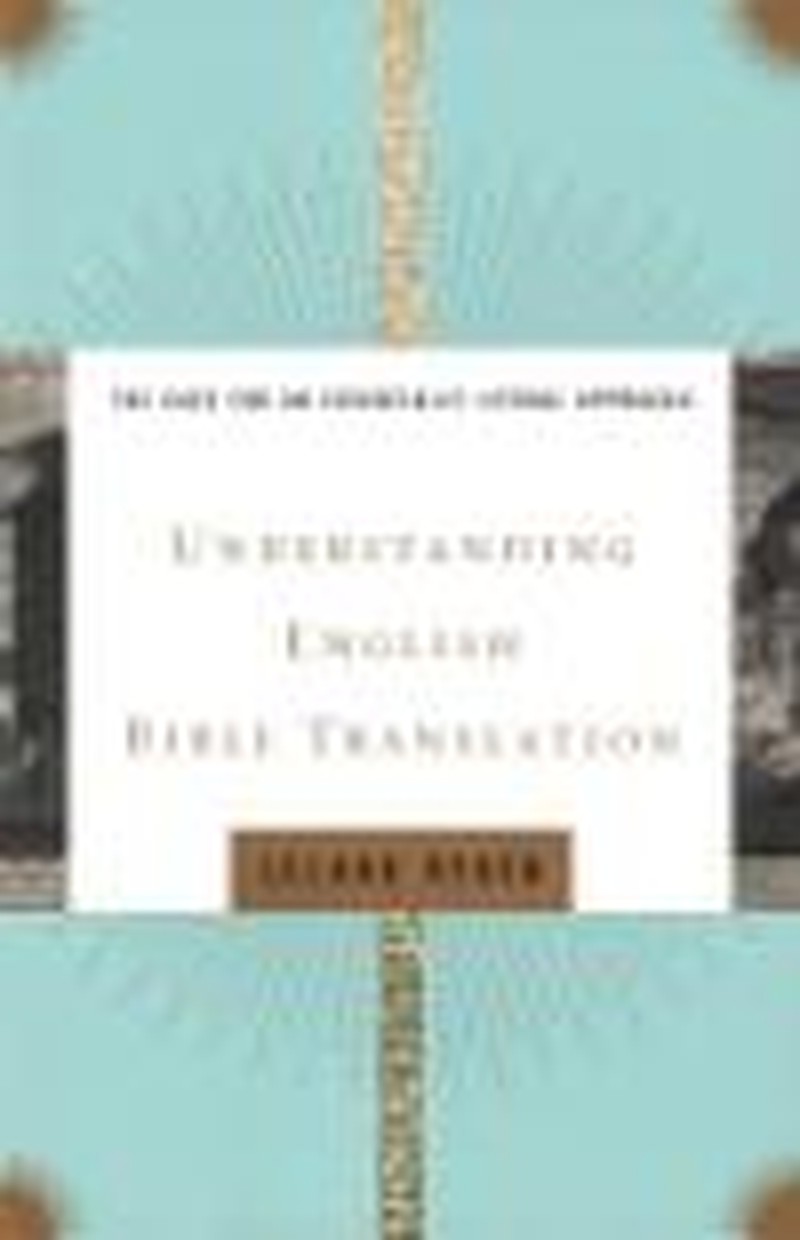Understanding English Bible Translation
- Leland Ryken Author
- Published Dec 15, 2009

EDITOR'S NOTE: The following is an excerpt from "Understanding English Bible Translation: The Case for an Essentially Literal Approach" by Leland Ryken (Crossway).
PART ONE
Overview of Issues
The issues underlying Bible translation have always been momentous, technical, and complex. But until the mid-twentieth century, English Bible translators worked within a consensus regarding the goals and methods of Bible translation. Translators had a clear and relatively simple picture in their minds of what they wanted to achieve. Certainly they did not operate in a context of two rival translation philosophies that prevails today.
Everything changed with the advent of dynamic equivalence as a theory and practice of English Bible translation. Part 1 of this book provides initial clarity to a complex field.
Chapter One: Understanding English Bible Translation
The translation scene has been in a state of flux for at least a decade. Important developments have occurred since the publication of my first book on English Bible translation, The Word of God in English, and this book takes those developments into account.
With a suddenness that remains a mystery, in the middle of the last century principles of translation that had been virtually unchallenged for centuries suddenly became passé for a majority of translators. A new "orthodoxy" swept the field, and much of what I say in this book will be a critique of that philosophy.
With the dawn of the current century, the new "orthodoxy" itself lost its position of unquestioned dominance. To many Bible readers it is no longer self-evident that translators should feel free to give English readers a substitute for the actual words of the original Hebrew and Greek texts. The premise that readers and market research should determine how the biblical text is translated has become highly suspect for many Bible readers. Even readers who continue to prefer dynamic equivalent translations are generally better informed about what kind of Bible they hold in their hands than they were a decade ago.
The translation scene is not only in transition; it is also highly splintered. On one side, dynamic equivalent translations can be plotted on an arc of increasing boldness in departing from what the original biblical text actually says, starting with the NIV and culminating in The Message. This family of translations is itself so diverse that it has produced the phenomenon of a destabilized Bible.
On the other end of the continuum, several essentially literal translations have recently appeared and have together diminished the stature that the NIV had enjoyed for three decades. D. A. Carson has correctly identified the rise of linguistic conservatism as one of the new developments of the past quarter century.
Defining the Terms of the Debate
The best quick introduction to the issues involved in English Bible translation today is a listing of the concepts that underlie translation, accompanied by definitions of the key terms. Virtually all of these terms originated in the last half century, a fact that signals the degree to which English Bible translation entered a new era in the middle of the twentieth century.
Receptor language: the language into which a text written in a foreign language is translated.
Donor language: the original language in which a text is written.
Native language: synonymous with donor language—the original language in which a text is written.
Dynamic equivalent: a meaning in the receptor language that is equivalent to (but not identical with) a meaning in a native-language text; for example, the "heart" as the modern way of denoting the essence of a person, especially the emotions, which for the ancients was situated in the kidneys.
Dynamic equivalence: a theory of translation based on the premise that whenever something in the native-language text is foreign or unclear to a contemporary reader, the original text should be translated in terms of a dynamic equivalent.
Functional equivalent: something in the receptor language that differs from what the original text says but that serves the same function in the receptor language; for example, "first fruits" translated as "special offering."
Functional equivalence: a theory of translation that favors replacing a statement in the original text with a functional equivalent whenever the original phraseology or reference is obscure for a modern reader in the receptor language; for example, "holy kiss" translated as "hearty handshake" because the latter is how Christians in Western cultures extend greetings to each other today.
Equivalent effect: translating in such a way as to produce the same effect on readers of the translation as the original text produced on its native-language readers; for example, The Message gives the image of "daughters as shapely and bright as fields of wildflowers" as producing the same effect as the original text's image of "daughters like corner pillars cut for the structure of a palace." (Ps. 144:12)
Formal equivalence: a theory of translation that favors reproducing the form or language of the original text, not just its meaning. In its stricter form, this theory of translation espouses reproducing even the syntax and word order of the original; the formula word for word translation often implies this stricter definition of the concept.
Verbal equivalent: a word or combination of words in the receptor language that most closely corresponds to a word in the original, native-language text.
Essentially literal translation: a translation that strives to translate the exact words of the original-language text but not in such a rigid way as to violate the normal rules of language and syntax in the receptor language.
Linguistic conservatism: as applied to Bible translation, a general orientation toward language that would seek to conserve the actual words of the original text as much as possible; an implied contrast to the "liberalism" of dynamic equivalence, which does not feel bound to reproduce the actual Hebrew and Greek words of the original.
Transparent text: this means two opposite things, and for that very reason the term has become devalued and misleading, even though it continues to be widely used by dynamic equivalent advocates. A text is transparent to the modern or contemporary reader when it is immediately understandable in the receptor language; this is the goal of dynamic equivalent translations. A translation is transparent to the original text when it reproduces the language, expressions, and customs of the original text; this is the goal of an essentially literal translation.
Target audience: the audience that a translation committee and publisher expect to be the chief market for a translation. Translation committees that consciously bring a target audience into their enterprise make translation decisions based on their desire to appeal to the target audience that they envision.
What the Terms Tell Us and Don't Tell Us
The definitions in the preceding section of this chapter provide a good introduction to the field of modern translation theory and practice. The terms do a good job of revealing where we currently stand with English Bible translation.
We should note first the dominance of the word equivalence. This was a brand-new word on the translation scene when it was introduced in the mid-twentieth century. There was no comparable dominating word for translation before Eugene Nida popularized the new philosophy of translation, but it is pretty clear that the word that translators would have used to describe their practice up to that point was correspondence. What translators formerly did was find the correspondent English words for the words of the original.
What is significant about the rise of the word equivalence as the dominant term? The significance lies in the fact that the word was popularized by Eugene Nida and his followers. While the word need not imply license, as used by dynamic equivalent proponents, it does imply a loose attitude toward preserving the words of the original text of the Bible. As used by the people who elevated it to the main term in translation theory, translating the Bible into something equivalent to the original text stands in implied contrast to translating it into something that corresponds to or is identical with the words of the original (subject of course to the changes required by translation from one language into another).
We might ask further what the word dynamic is doing in the formula. The phrase has become so common that we scarcely note what an odd adjective dynamic is in this context. It is mainly an honorific term—dynamic in contrast to the allegedly static or dead products of essentially literal translators. But in this context the word dynamic actually means something in addition, namely, a spirit of freedom or exemption from the need to reproduce the actual words of the original in an English translation.
The terms currently in fashion have the pernicious effect of privileging dynamic equivalence over the rival theory of translation. Consider the formula verbal equivalence. This would be innocuous and even helpful if it meant "finding the equivalent English word for the word in the original." The problem is that the word equivalent has already been co-opted by dynamic equivalent advocates. It carries the connotation of being a substitute for rather than corresponding to the words of the original biblical text.
We also need to note how inadequate—to the point of being misleading—the terms dynamic equivalence and functional equivalence are as descriptors of what translations bearing those names actually do with the original text. In fact, only a small amount—almost a statistically insignificant quantity—of what we find in modern dynamic equivalent translations is a matter of finding an equivalent for something in the original. What these translations mainly do is beyond that parameter, consisting of such things as changing syntax and word order, adding exegesis and interpretive commentary to the text, simplifying the content of the original text, removing figurative language from sight, producing a colloquial style for the English Bible, and adapting the translation to the expectations of a target audience. None of these activities can be honestly construed as finding an equivalent for difficult words and phrases in the original text of the Bible.
Realistically, the prevailing terminology will not change any time soon. So we need to use the terms in a "state of high alert." Many of the terms are misleading. They also stack the deck in favor of modern translation theories and against traditional understandings of what English Bible translation should be.
Understanding English Bible Translation: The Case for an Essentially Literal Approach
Copyright © 2009 by Leland Ryken
Published by Crossway Books
a publishing ministry of Good News Publishers
1300 Crescent Street
Wheaton, Illinois 60187




















